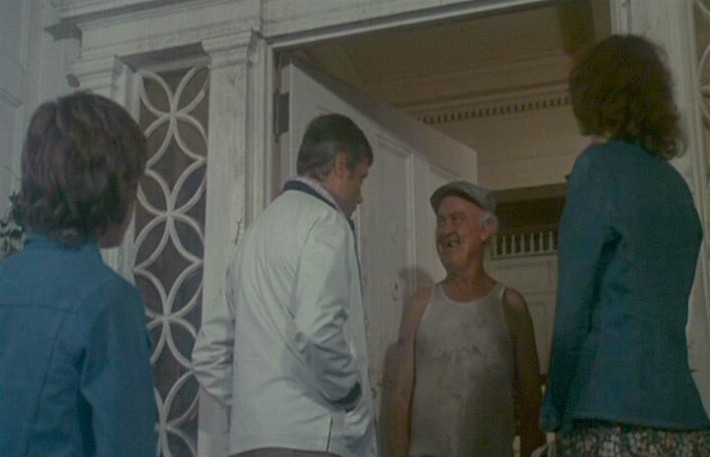Culture
The Bloody Truth: “Burnt Offerings”

(Spoilers ahead.)
Few subgenres of horror cinema have been as undying as the haunted house film. From Robert Wise’s The Haunting to Oren Peli’s low-budget success story Paranormal Activity, haunted house movies have been making movies uneasy for years. In the beginning, it was as simple as something going bump in the night, but as the subgenre became mass-produced, it was clear that something more had to be done to truly unnerve the audience. This is what Burnt Offerings attempted to do when it was released in 1976. It took the conventions of the haunted house story and added an even more sinister element: the all-American family.
For those unfamiliar, Burnt Offerings follows the story of the Rolfs, who become caretakers for an old house, but discover that the house has an otherworldly influence on its inhabitants. With each injury or death, the house becomes stronger. While this is a fairly basic premise, Burnt Offerings creates a unique sense of tension with its inclusion of the Rolf family. Suddenly, fathers are turned against their sons. Husbands and wives are at odds with each other. It would seem that the destruction of the very notion of the American family is happening before the viewer’s eyes. Most curious is that the film only features family members. Even though the Rolfs are merely employees, working at the house for the summer, they are hired by a brother and sister who stipulate that along with the house, the Rolfs must take care of their mother. Burnt Offerings is not subtle in its message, but it’s through the traditional family dynamics that horror is both conveyed and produced. This is achieved in a number of ways, but in order to fully understand them, it is important to know the characters, or rather, the archetypes.
The Rolf family is headed by Ben, played by the late Oliver Reed, and Burnt Offerings wastes no time in establishing Ben as a dominant force in the household. What makes this so interesting is that, as a physical presence, Reed is less than commanding. His performance is fine, but the character of Ben is resigned to a bookish and unassuming exterior. As the movie progresses, Ben disproves this costume, demonstrating his status as an alpha male. However, Burnt Offerings goes even further than that. Ben is the traditional male at his most hyper-masculine. For instance, when Ben and his son David (Lee Montgomery) have their first altercation, it begins in the pool. The two are playfully splashing when David attempts to dunk his father under water. The house’s undeniable influence causes Ben to react badly, and he begins to dunk his son forcefully under the water. In a not-so-subtle manner, David is establishing his dominance over his son. Even as he tries to assault his wife, this could easily be read as Ben’s virility and manhood being proven in a violent and disturbing manner.
Marian (Karen Black), on the other hand, behaves quite differently. While she is never established as anything other than a domestic, Marian relishes the role with an eerie fervor. Any semblance of a personal life or interests of her own are lost in the frenzy of caring for the elderly matriarch of the house and housework. Burnt Offerings tries to play it off as though Marian is becoming enchanted with the house, but her almost servile instincts to preserve the house over her family’s safety make it seem like Marian has become a housewife from hell. What is interesting about the film is that Marian’s work, while questionable, is rewarded in the end. True, she becomes possessed by the spirit of the house, but she is allowed to live while all the others, including her young son, are killed. In this sense, the message of Marian’s femininity and domesticity is a truly complicated and uncertain one.
While the messages of Burnt Offerings may be muddled, there is one thing that is not: the family itself. From its abusive, hyper-masculine father figure to its brainwashed domestic mother, the fear is derived from the traditional roles of the family. As such, the family serves two functions. Of course it perpetuates the narrative, but more than that, it allows audiences to fear them while also seeing elements of their own lives in these characters, creating a new kind of fear. No matter how one reads Burnt Offerings, it is impossible to ignore its commentary on 1970s family dynamics.